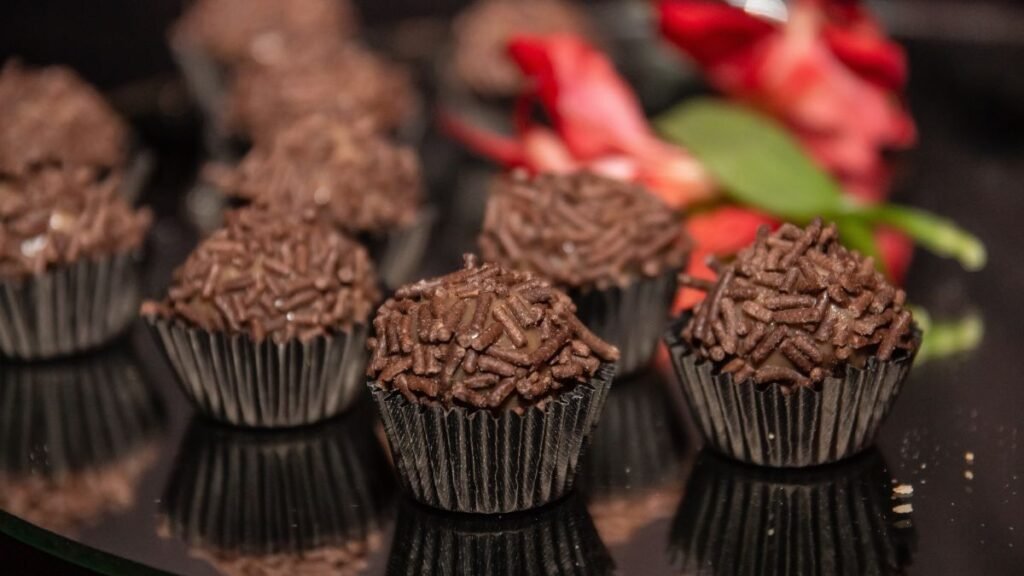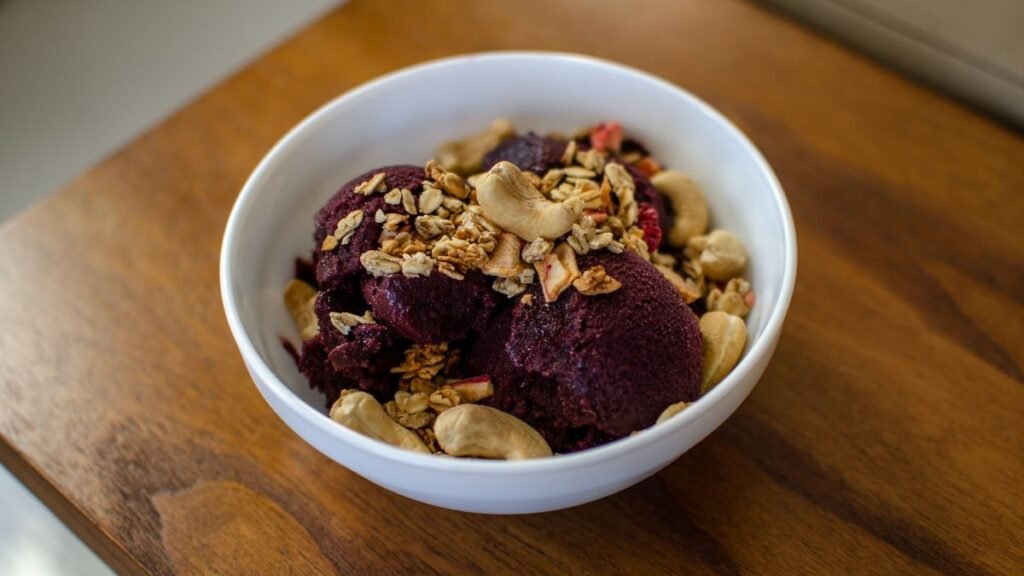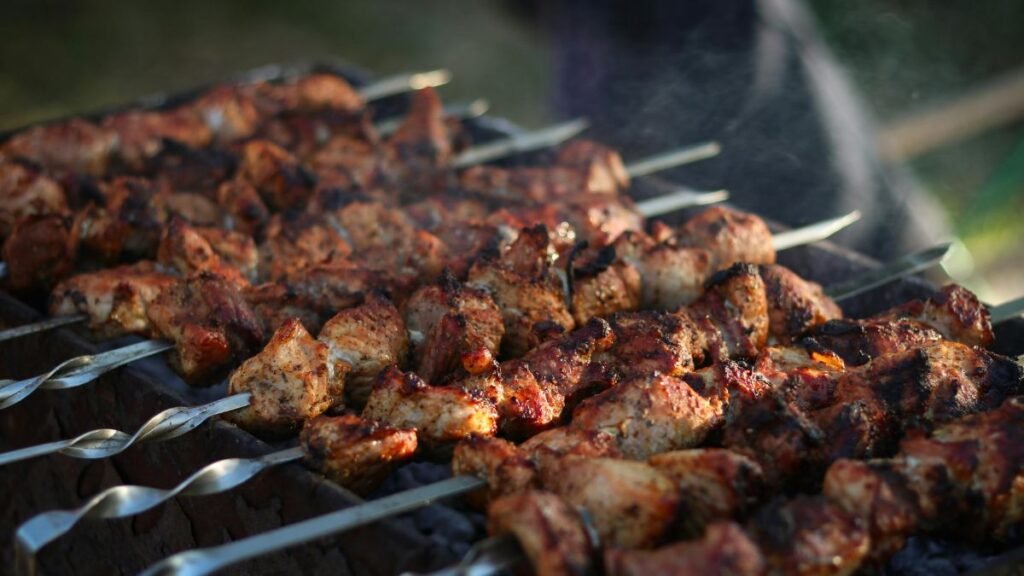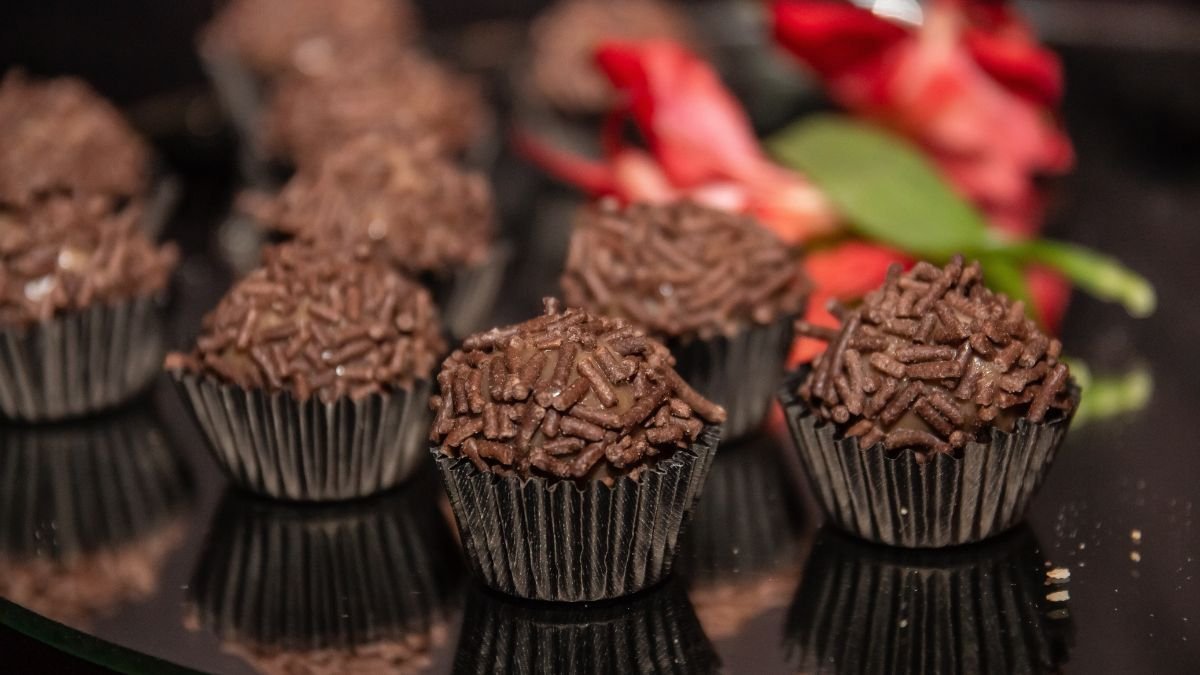Introduction
Have you ever wondered how a single country can offer such a rich and diverse culinary experience? Brazil’s cuisine is a vibrant blend of indigenous, African, and European influences, creating flavors that are as unique as its culture.
The indigenous peoples of Brazil contributed ingredients like cassava and a variety of fruits, while African influences brought in techniques and flavors that are now staples in Brazilian cooking, such as the use of palm oil and spices. This is what makes Irresistible Brazilian Food so captivating.
European colonization introduced new ingredients and cooking methods, further enriching the culinary landscape. From the Amazon rainforest to the coastal cities and southern plains, each region brings its own twist to the table, showcasing local ingredients and traditional recipes that have been passed down through generations.

This article dives into 10 iconic dishes that showcase the country’s culinary diversity. Whether it’s street food classics or restaurant-quality specialties, these dishes highlight the balance between savory and sweet flavors. Get ready to explore a world of taste that will leave you craving more.
Key Takeaways
- Brazil’s cuisine is shaped by the influences of indigenous, African, and European cultures.
- Regional geography plays a key role in creating distinct flavor profiles.
- The article highlights 10 iconic dishes from various regions of Brazil.
- Both street food and restaurant-quality specialties are included.
- The dishes represent a mix of savory and sweet flavors.
Introduction to Irresistible Brazilian Food
Brazil’s culinary scene is a melting pot of cultures, offering a unique blend of flavors and traditions. In 2017, the country was designated a UNESCO Creative City of Gastronomy, highlighting its rich food heritage. This recognition underscores the diversity and creativity found in its dishes.
Immigration has played a significant role in shaping the nation’s cuisine. Indigenous, African, and European influences have come together to create distinct regional flavors. From the hearty stews of the south to the seafood delicacies of the coast, each area has its own culinary identity.
One of the most beloved aspects of Brazil’s food culture is comida de boteco, or bar food. These casual, flavorful snacks are enjoyed alongside cold drinks in lively social settings. At the same time, fine dining establishments showcase the sophistication of Brazilian cuisine.
The U.S. has seen a growing presence of Brazilian steakhouses, such as Texas de Brazil, which operates 54 locations across 23 states and 10 international sites. These restaurants bring the country’s famous churrasco-style barbecue to a global audience.
Health trends are also making their mark. Superfoods like acai are gaining popularity, reflecting a shift toward nutritious yet delicious options. Whether it’s street food or a gourmet meal, Brazil’s culinary offerings continue to captivate food lovers worldwide.
1. Feijoada: The Heart of Brazilian Cuisine
Feijoada is more than just a dish; it’s a cultural icon that tells the story of Brazil’s history. This hearty stew, made with black beans and a variety of pork cuts, is a cornerstone of the nation’s cuisine. Its rich flavor and deep roots make it a must-try for anyone exploring Brazilian dishes.
What is Feijoada?
Feijoada originated from Portuguese cozido, a meat and vegetable stew. Over time, it evolved with African influences, incorporating ingredients like black beans and smoked meats. Traditional feijoada typically features at least seven different cuts of pork, including bacon, sausage, and ham hocks, resulting in a robust and savory dish.
It’s often served with essential accompaniments, such as orange slices, farofa (toasted cassava flour), and collard greens. These sides complement the dish’s richness, adding layers of texture and flavor.
Regional Significance
Feijoada’s preparation varies across Brazil. In Rio de Janeiro, it’s typically lighter, with fewer pork cuts and a focus on beans. São Paulo’s version is richer, often including more meats and a thicker consistency. Both styles reflect their regions’ culinary preferences.
“Feijoada is more than a meal; it’s a celebration of Brazil’s diverse heritage.”
The tradition of eating feijoada on Wednesdays and Saturdays dates back to the 19th century. It began on plantations, where enslaved people would prepare the dish using leftover meats. Today, it serves as a symbol of unity and shared history.
Modern adaptations include vegetarian versions, using smoked tofu and mushrooms. These variations cater to changing dietary preferences while preserving the essence of the dish.
| Region | Preparation Style | Key Characteristics |
|---|---|---|
| Rio de Janeiro | Lighter | Fewer pork cuts, focus on beans |
| São Paulo | Richer | More meats, thicker consistency |
2. Coxinha: Brazil’s Beloved Snack
Coxinha’s crispy exterior and creamy filling make it a crowd favorite. This teardrop-shaped snack is a staple in Brazilian culture, enjoyed by people of all ages. Its unique texture and flavor have made it a go-to option for quick bites and social gatherings.
What is Coxinha?
Coxinha is a deep-fried snack made with shredded chicken and a creamy sauce, encased in a doughy shell. The contrast between the crispy crust and the soft filling is what makes it irresistible. Its shape resembles a chicken drumstick, which is how it got its name—coxa means “thigh” in Portuguese.
The dish originated in 19th-century São Paulo, where it was created for the aristocracy. Legend has it that a cook invented it to satisfy a young prince’s craving for chicken. Today, it’s a popular street food and a must-have at parties and festivals.
Popularity
Coxinha’s appeal has grown beyond Brazil. Texas de Brazil, a well-known chain, serves over 12,000 coxinhas weekly across its U.S. locations. Its mass production has made it a common item in school lunch programs and frozen food aisles. The frozen coxinha market has experienced a 23% compound annual growth rate (CAGR) since 2020, reflecting its increasing global demand.
It’s often compared to other snacks, such as empanadas and croquettes. While empanadas have a flaky crust and croquettes are denser, coxinha stands out for its unique shape and texture. Whether enjoyed fresh or frozen, it’s a snack that continues to win hearts worldwide.
| Snack | Crust | Filling |
|---|---|---|
| Coxinha | Crispy dough | Creamy chicken |
| Empanada | Flaky pastry | Varied (meat, cheese) |
| Croquette | Breadcrumb coating | Mashed potatoes, meat |
3. Pão de Queijo: Cheesy Delight
Originating from the dairy farms of Minas Gerais, Pão de Queijo has become a global sensation. This gluten-free snack, made with tapioca flour and queijo minas cheese, offers a unique blend of textures and flavors. Its signature chewiness comes from a chemical reaction between the ingredients, making it a standout in cuisine.
What is Pão de Queijo?
Pão de Queijo traces its roots to 18th-century Minas Gerais, where dairy farms were abundant. The use of tapioca flour gives it a gluten-free texture, while queijo minas cheese provides a rich, creamy flavor. The combination of these ingredients creates a snack that is both light and satisfying.
Traditional Serving
Traditionally, Pão de Queijo is enjoyed fresh and warm, often paired with a cup of cafezinho coffee or fresh tropical juices. Its versatility makes it a favorite for breakfast, snacks, or even as a side dish. Over time, modern variations have emerged, catering to diverse tastes.
Modern adaptations include bacon-stuffed and sweet guava-filled versions, offering new twists on the classic recipe. These variations have contributed to its growing popularity, especially in the U.S., where frozen Pão de Queijo sales have seen a 40% annual growth.
| Variation | Key Ingredient | Flavor Profile |
|---|---|---|
| Classic | Queijo Minas | Cheesy, slightly tangy |
| Bacon-Stuffed | Bacon | Savory, smoky |
| Sweet Guava | Guava paste | Sweet, fruity |
Whether enjoyed in its traditional form or as a modern variation, Pão de Queijo continues to captivate food lovers worldwide. Its simplicity and versatility make it a true gem in the world of snacks.
4. Brigadeiro: Brazil’s Sweet Treat
When it comes to sweet indulgences, few treats capture the essence of Brazil like Brigadeiro. This bite-sized confection is a blend of simplicity and decadence, making it a beloved dessert nationwide. Its rich, creamy texture and sweet flavor have made it a staple at celebrations and gatherings.
What is Brigadeiro?
Brigadeiro is a traditional Brazilian dessert made with just three ingredients: condensed milk, cocoa powder, and butter. The mixture is cooked until thick, rolled into balls, and coated with chocolate sprinkles. Its origins date back to the 1940s, when it was created during Brazilian presidential election campaigns as a fundraising treat.
Over time, Brigadeiro has evolved, with modern gourmet versions offering unique twists. Flavors such as pistachio, sea salt caramel, and ruby chocolate have gained popularity, appealing to a diverse range of palates. These variations showcase the dessert’s versatility while staying true to its roots.
Occasions
Brigadeiro is a must-have at Brazilian children’s parties, with a 97% inclusion rate at birthdays. Its small size and sweet taste make it a hit with both kids and adults. Beyond birthdays, it’s also a popular choice for weddings, anniversaries, and other celebrations.
In recent years, Brigadeiro has crossed borders, becoming a trendy cake filling in U.S. bakeries. Its smooth, creamy texture pairs perfectly with cakes, adding a touch of Brazilian flair to desserts. This trend reflects its growing global appeal.
“Brigadeiro is more than a dessert; it’s a symbol of joy and togetherness.”
Compared to similar confections, Brigadeiro stands out for its simplicity. While truffles are denser and fudge is firmer, Brigadeiro offers a unique balance of creaminess and sweetness. Whether enjoyed in its classic form or as a modern variation, it’s a treat that continues to win hearts worldwide.
5. Acai Beverages: A Refreshing Superfood
Acai, a vibrant purple berry from the Amazon, has taken the world by storm. Known for its rich nutritional profile and refreshing taste, it has become a staple in health-conscious diets. Whether enjoyed in traditional preparations or modern adaptations, acai offers a unique blend of health benefits and delicious flavors.

What is Acai?
Acai berries grow on palm trees in the Amazon rainforest, harvested by skilled climbers known as “peconheiros.” These climbers scale tall trees to collect the berries, which are then processed into pulp. The berries are packed with antioxidants, containing six times more than blueberries. This makes them a powerhouse of nutrition.
Health Benefits
Acai is rich in anthocyanins, omega fatty acids, and fiber, making it a superfood for heart health and digestion. Its high antioxidant content helps combat oxidative stress, while its omega fatty acids support brain function. The fiber content helps maintain a healthy digestive system.
The global market for frozen acai pulp is expected to reach $1.2 billion by 2024. This growth reflects its popularity as a versatile ingredient in smoothies, bowls, and beverages. Traditional Brazilian preparations often include acai served with granola and coconut milk, while U.S. adaptations focus on smoothie blends and acai bowls.
“Acai is more than a berry; it’s a symbol of the Amazon’s natural bounty.”
However, consumers should be cautious of added sugars in commercial acai products. Many pre-packaged items contain high levels of sugar, which can offset the health benefits that they offer. Opting for pure acai pulp or homemade preparations ensures you reap the full nutritional rewards.
From its origins in the Amazon to its global popularity, acai continues to captivate health enthusiasts and food lovers alike. Its versatility and health benefits make it a true superfood for the modern age.
6. Moqueca de Peixe: Coastal Flavor
Moqueca de Peixe is a coastal dish that brings the ocean’s essence to your plate. This traditional stew is a staple in Brazil’s coastal regions, known for its vibrant colors and bold flavors. Combining fresh fish with aromatic ingredients, this dish captures the essence of the sea.
What is Moqueca de Peixe?
Moqueca de Peixe is a fish stew simmered in a rich sauce made with coconut milk, dendê oil (a type of palm oil), and spices. The dish is often cooked in a clay pot, which enhances its flavors. Texas de Brazil’s version uses whitefish, offering a modern twist on this classic recipe.
Regional Origin
There are two main styles of Moqueca: Bahian and Capixaba. Bahian Moqueca, from Bahia, is richer and includes coconut milk and dendê oil. Capixaba Moqueca, from Espírito Santo, is lighter and uses olive oil instead of coconut milk. Both styles reflect their regions’ culinary traditions.
Essential ingredients include palm oil, cilantro, and malagueta peppers. These elements contribute to the dish’s distinct flavor profile. Clay pot cooking is another key factor, as it allows the flavors to meld together perfectly.
“Moqueca de Peixe is more than a dish; it’s a tribute to Brazil’s coastal heritage.”
Sustainable fishing practices are crucial for sourcing the fish used in Moqueca. Many chefs prioritize locally caught, eco-friendly options. In 2023, the FDA approved Brazilian palm oil imports, ensuring the use of high-quality ingredients for this beloved dish.
Whether enjoyed in a Brazilian steakhouse or a coastal home, Moqueca de Peixe is a culinary experience that connects you to Brazil’s vibrant coastal culture.
7. BBQ Chicken Drumsticks: Smoky Goodness
The smoky aroma of BBQ chicken drumsticks is a signature of Brazilian grilling traditions. This dish combines tender meat with bold flavors, making it a favorite at gatherings and steakhouses alike. Whether enjoyed at a casual cookout or a fine dining experience, it’s a testament to the art of grilling.
What are BBQ Chicken Drumsticks?
BBQ chicken drumsticks are marinated and grilled to perfection, often using a unique sauce made with guava paste and smoked paprika. The brining process, which lasts 12-24 hours in a saltwater solution, ensures the meat remains juicy and flavorful. This method is a hallmark of Brazilian churrasco-style cooking.
To prevent cross-contamination during grilling, strict protocols are followed. Separate utensils and grilling areas are used for chicken and other meats. This ensures safety while preserving the dish’s authentic taste.

Popularity in Brazilian Steakhouses
At Brazilian steakhouse chains like Texas de Brazil, BBQ chicken drumsticks are a top seller. The restaurant serves over 8,000 drumsticks daily across its locations. Their glaze, featuring guava paste and smoked paprika, adds a sweet and smoky twist that sets it apart.
In the U.S., drumsticks are preferred over thighs for their ease of eating and presentation. This trend aligns with the growing popularity of Brazilian grilling techniques. Compared to American BBQ, which often uses tomato-based sauces, Brazilian versions are lighter and fruitier in flavor. Korean BBQ, on the other hand, leans toward spicy and tangy flavors.
| BBQ Style | Key Sauce Ingredients | Flavor Profile |
|---|---|---|
| Brazilian | Guava paste, smoked paprika | Sweet, smoky |
| American | Tomato, vinegar, molasses | Tangy, rich |
| Korean | Gochujang, soy sauce, garlic | Spicy, tangy |
Whether you’re enjoying them at a steakhouse or making them at home, BBQ chicken drumsticks are a flavorful and satisfying choice. Their smoky goodness is a true representation of Brazilian grilling expertise.
8. Vatapá: A Creamy Delight
Vatapá is a dish that brings together the richness of Afro-Brazilian heritage in every bite. This creamy delight is a staple in Brazil’s northeastern regions, known for its unique texture and bold flavors. Made with shrimp, peanuts, and cashews, this dish reflects the country’s diverse culinary influences.
What is Vatapá?
Vatapá is a traditional dish with Afro-Brazilian roots, tracing back to Yoruba culinary traditions. The recipe typically includes shrimp, peanuts, cashews, and a blend of spices. The dish is thickened with either bread or cassava flour, giving it a creamy consistency. Its rich flavor comes from the combination of ingredients, including coconut milk, which adds a subtle sweetness.
Cultural Significance
Vatapá holds a special place in Brazilian culture, particularly in the Candomblé religion. It is often used as an offering in religious ceremonies, symbolizing gratitude and connection to ancestral traditions. The dish also varies by region, with Salvador and Recife having distinct preparation methods. In Salvador, it’s often richer and spicier, while Recife’s version is lighter and more aromatic.
Modern adaptations of Vatapá address concerns about allergens, particularly for individuals with tree nut allergies. Some recipes substitute peanuts and cashews with seeds or omit them entirely. Despite these changes, the dish retains its essence and remains a beloved part of Brazil’s culinary landscape.
“Vatapá is more than a dish; it’s a celebration of Afro-Brazilian culture and history.”
- Afro-Brazilian Roots: Originates from Yoruba culinary traditions.
- Thickener Options: Bread or cassava flour for a creamy texture.
- Religious Role: Used in Candomblé offerings.
- Regional Variations: Salvador vs. Recife preparation styles.
- Allergen Adaptations: Modern recipes cater to tree nut allergies.
Whether enjoyed in its traditional form or as a modern adaptation, Vatapá is a dish that connects people to Brazil’s vibrant cultural heritage. Its creamy texture and bold flavors make it a must-try for anyone exploring the country’s cuisine.
9. Bobó de Camarão: Shrimp in Coconut Sauce
Bobó de Camarão is a dish that combines the richness of shrimp with the creaminess of coconut milk. This traditional dish from Brazil’s northeast is a celebration of coastal flavors and Afro-Brazilian heritage. Its velvety texture and bold taste make it a standout in the region’s culinary repertoire.
What is Bobó de Camarão?
Bobó de Camarão is a creamy shrimp dish made with yucca puree, coconut milk, and dendê oil (a type of palm oil). The yucca puree gives it a smooth, thick consistency, while the coconut and palm oil add depth and richness. The name “Bobó” originates from the Angolan word “bobo,” meaning “soft,” which aptly describes the dish’s texture.
Properly deveining shrimp is essential for this dish. It ensures the shrimp are clean and enhances their natural flavor. The shrimp are then simmered in the creamy sauce, absorbing the aromatic spices and the essence of coconut.
Traditional Serving
Bobó de Camarão is often served with white rice or pirão, a side dish made from cassava flour. The combination balances the dish’s richness and adds texture. Pairing it with a caipirinha cocktail enhances the dining experience, as the citrusy drink complements the creamy flavors.
Cassava, a key ingredient, is widely cultivated in Northeast Brazil. Its versatility makes it a staple in many regional dishes. In 2024, the FDA reported importing 32 million pounds of Brazilian shrimp, highlighting its global demand and quality.
“Bobó de Camarão is more than a dish; it’s a tribute to Brazil’s coastal and cultural heritage.”
Whether enjoyed at a family gathering or a coastal restaurant, Bobó de Camarão is a dish that connects people to Brazil’s vibrant culinary traditions. Its creamy texture and bold flavors make it a must-try for anyone exploring the country’s cuisine.
10. Canjica: A Sweet Corn Pudding
Canjica is a traditional dessert that brings warmth and sweetness to Brazilian celebrations. Made with whole kernel white corn, this creamy pudding is a staple during June Festivals. Its rich texture and comforting flavors make it a favorite among locals and visitors alike.
What is Canjica?
Canjica traces its roots to indigenous mugunzá, a dish made with corn and spices. Portuguese settlers adapted it, adding milk and sugar to create the dessert we know today. The dish is simmered until the corn kernels are soft and creamy, often enhanced with coconut milk and cinnamon for added flavor.
Compared to similar desserts, Canjica stands out for its unique texture. While rice pudding is smoother and maja blanca is firmer, Canjica offers a delightful balance of creaminess and chewiness. Its versatility allows it to be enjoyed warm or cold, making it a year-round treat.
Seasonal Popularity
Canjica is especially popular during June Festivals, a time of celebration and tradition in Brazil. These festivals, known as Festas Juninas, feature a variety of corn-based dishes, with Canjica taking center stage. Its comforting flavors and hearty texture make it a perfect fit for the chilly winter nights of the season.
Despite its popularity, exporting canned Canjica has faced challenges. The delicate balance of flavors and textures is difficult to replicate in mass production. However, its health benefits, including high fiber and B vitamins, have sparked interest in healthier, homemade versions.
For those with dietary restrictions, vegan alternatives using almond milk have gained traction. These adaptations ensure that everyone can enjoy this beloved dessert, regardless of dietary preferences.
“Canjica is more than a dessert; it’s a celebration of tradition and togetherness.”
Whether enjoyed at a festival or made at home, Canjica is a dish that connects people to Brazil’s rich culinary heritage. Its creamy texture and sweet flavors make it a must-try for anyone exploring the country’s cuisine.
Conclusion: Exploring the Flavors of Brazil
Exploring Brazil’s culinary treasures reveals a world of rich traditions and vibrant flavors. Recognized by UNESCO as part of its Intangible Cultural Heritage, the country’s food culture is a testament to its rich history and culinary innovation. Emerging trends, such as the export of Amazonian superfoods, highlight Brazil’s growing influence on global cuisine.
For an authentic experience, visit a steakhouse like Texas de Brazil, known for its award-winning wine pairings and extensive salad bar. Pair Tannat with red meats or Vinho Verde with fish for a perfect blend of taste and tradition.
Don’t miss São Paulo’s Mercado Municipal, a hub for culinary tourism. From exotic fruits to regional specialties, it’s a must-visit for food enthusiasts. Brazil’s cuisine is more than a meal—it’s a journey through culture and flavor. Learn more Beaches in São Paulo.
FAQ
What is Feijoada?
Feijoada is a hearty stew made with black beans, pork, and beef. It’s a staple in Brazilian cuisine, often served with rice, collard greens, and orange slices.
Why is Coxinha so popular in Brazil?
Coxinha is a deep-fried snack filled with shredded chicken. Its unique teardrop shape and savory flavor make it a favorite at parties and street food stalls.
What makes Pão de Queijo special?
Pão de Queijo is a cheesy bread made with tapioca flour and cheese. Its crispy exterior and soft, chewy center make it a beloved breakfast or snack item.
When is Brigadeiro typically served?
Brigadeiro, a chocolate truffle made with condensed milk and cocoa, is a must at celebrations like birthdays and weddings. It’s a symbol of joy and indulgence.
What are the health benefits of Acai?
Acai is packed with antioxidants, fiber, and healthy fats. It’s often blended into smoothies or bowls, offering a refreshing and nutritious boost.
Where does Moqueca de Peixe originate?
Moqueca de Peixe is a fish stew from Brazil’s coastal regions. It’s cooked with coconut milk, tomatoes, and spices, showcasing the area’s rich flavors.
Why are BBQ Chicken Drumsticks popular in Brazilian steakhouses?
BBQ Chicken Drumsticks are a smoky, flavorful dish often featured in Brazilian steakhouses. They’re marinated and grilled to perfection, offering a satisfying bite.
What is the cultural significance of Vatapá?
Vatapá is a creamy dish made with bread, shrimp, coconut milk, and a variety of spices. It’s deeply rooted in Afro-Brazilian culture and is often served during festivals.
How is Bobó de Camarão traditionally served?
Bobó de Camarão is a shrimp dish cooked in a creamy coconut sauce. It’s typically paired with rice or farofa, creating a rich and flavorful meal.
When is Canjica most commonly enjoyed?
Canjica, a sweet corn pudding, is especially popular during the June Festivals in Brazil. It’s made with milk, sugar, and cinnamon, offering a comforting dessert.





Só de começar a ler fiquei com fome, heheheh! Saudades de uma feijoada – comidas deliciosas – de VER-DA-DE!!! Yummy.
Olá, aproveite a sugestão e venha ao Brasil. Obrigada por compartilhar nosso blog. Abraços